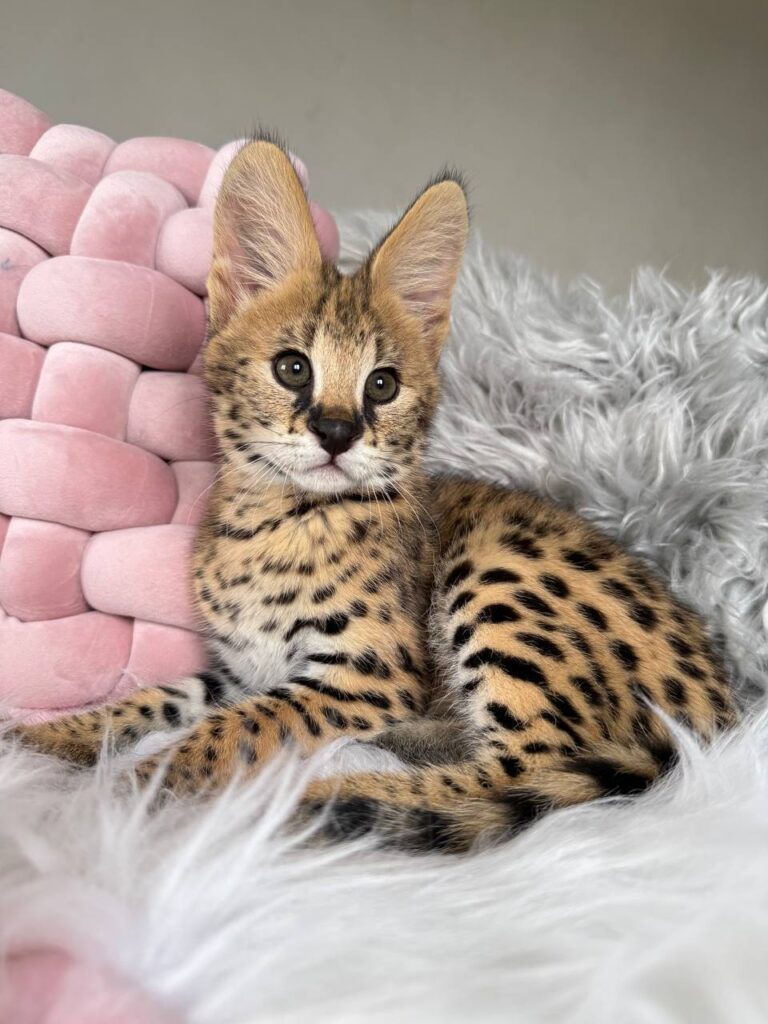African Serval cats stand apart in the world of exotic felines not just for their dramatic appearance, but for their wild lineage and behavioral complexity. Native to the African savannas, servals are medium-sized wild cats with long legs, oversized ears, and a spotted coat that evokes comparisons to cheetahs. Yet, unlike domesticated breeds, servals retain a raw, untamed energy that makes them both mesmerizing and challenging to keep. Their hunting skills are unmatched among small wild cats, with a success rate that rivals larger predators. This efficiency stems from their acute hearing and vertical leap, which allows them to snatch birds mid-flight or detect rodents beneath the soil.
When compared to hybrid breeds like the Savannah cat, a cross between a serval and a domestic cat, the differences become more pronounced. Savannahs inherit the serval’s elegance and athleticism but are bred for domestic compatibility. They are more social, easier to train, and generally more adaptable to household environments. However, early generation Savannahs (F1 and F2) still exhibit strong wild traits, including high energy levels and territorial behavior. These hybrids often require specialized care and are subject to legal restrictions in many regions, much like their serval ancestors.
Bengal cats, another popular exotic breed, descend from the Asian Leopard Cat and domestic cats. Bengals are known for their vivid rosetted coats and playful, intelligent nature. Unlike servals, Bengals are fully domesticated and thrive in typical home settings. They crave stimulation and interaction but lack the unpredictable instincts of wild cats. Their appeal lies in their balance of wild aesthetics and manageable temperament, making them a favorite among exotic cat enthusiasts who seek beauty without the burden of wild behavior.
Exotic Shorthairs, while not wild in origin, offer a contrasting example. Bred as a short-haired version of the Persian, they are docile, affectionate, and low-maintenance. Their appeal is rooted in their plush appearance and calm demeanor, raits that place them at the opposite end of the spectrum from servals. Where servals demand space, stimulation, and respect for their autonomy, Exotic Shorthairs are content with cozy laps and quiet routines.
The fascination with servals and their hybrids reflects a broader human desire to connect with the wild while maintaining control. Yet, servals resist domestication in ways that challenge even experienced owners. Their nocturnal habits, need for large territories, and instinctual behaviors make them unsuitable for most households. Unlike Bengals or Savannahs, servals are not bred for companionship but for survival. Their presence in captivity raises ethical questions about the boundaries between admiration and exploitation.
Understanding these distinctions is crucial for anyone considering an exotic feline. Servals offer a glimpse into the untamed world of African wildlife, but they are not pets in the conventional sense. They demand respect, expertise, and a commitment to their well-being that goes far beyond the allure of their beauty. In contrast, breeds like Bengals and Savannahs represent a compromise, wild looks with domestic sensibilities. Choosing between them is not just a matter of taste but of responsibility. The more we learn about these cats, the clearer it becomes that true appreciation lies not in ownership, but in understanding their nature and preserving their place in the wild.
You may also like this;

